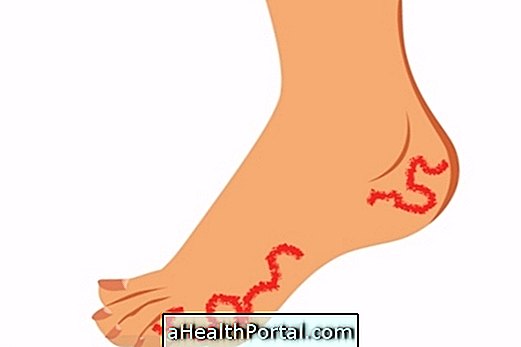The dog's worm is a type of parasite that can enter the human body through small wounds on the skin, causing a skin irritation known as geographic bug. Usually, this infection is most common after being barefoot on the beach or in gardens that may have animal feces.
This worm lives inside the intestine of domestic animals like the dog and the cat, and their larvae are released in the feces, contaminating the soil and can stick to the skin, when someone steps in these places, for example.
The treatment is done with the use of vermifuge remedies in the form of tablet and ointment, which must be applied in place for about 7 days, in order to eliminate the worm.

Main symptoms
Symptoms caused by the dog's worm on the skin include:
- Sensation of something moving under the skin;
- Red wound, shaped like a path, that increases by approximately 1 cm per day;
- Intense itching of the skin, which worsens at night;
- Swelling in the skin around the wound.
These symptoms are most common in the skin of the foot or legs, since the worm usually enters the body due to contact with the contaminated soil.
How is the treatment done?
Although the dog's worm infection can resolve itself, it can also cause a lot of discomfort, especially at night, when the itching can even stop you from falling asleep.
Thus, it is recommended to start treatment with antiparasitic ointments, and tablets such as thiabendazole, albendazole or ivermectin, for example, that allow to accelerate the process of elimination of the worm, avoiding that the symptoms continue to aggravate.
Learn more about how dog worm treatment is done.
How to avoid getting the dog's worm
The best way to avoid catching the dog's worm is to not walk barefoot in places that may be contaminated with animal feces, such as beaches, gardens or on the street, for example.
In addition, those who have a pet should always collect poop when taking the animal on the street, for example, as well as do regular deworming.






















